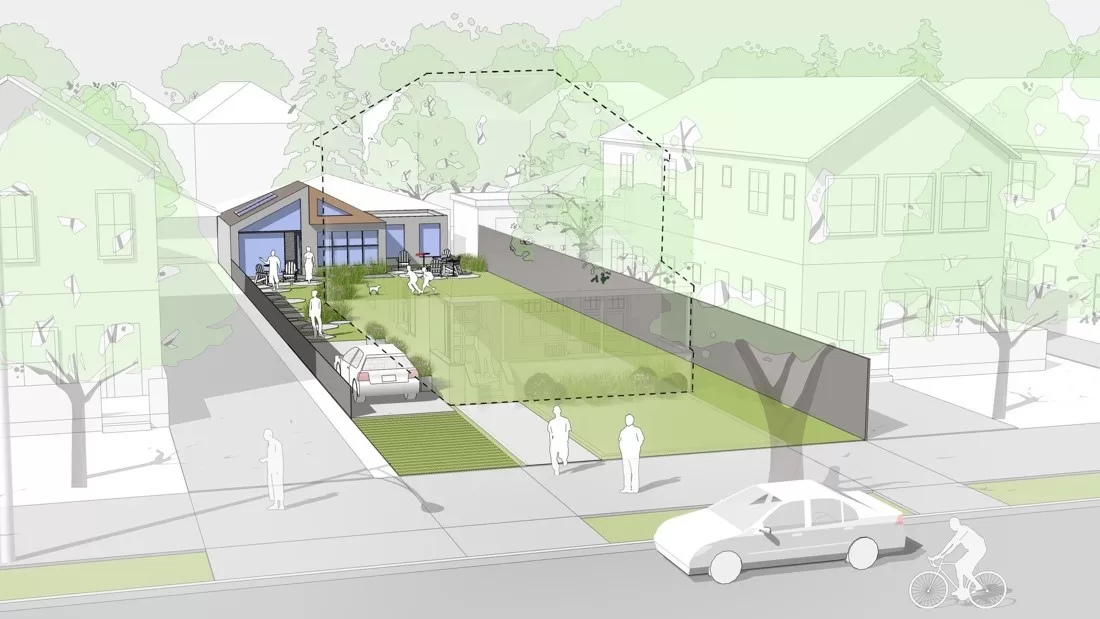I scourged the searches to find Useful Info, while this can be lengthy, i try to sum it up of each sections by Numbers.
April 2024 – Public review for City of Yes for Housing Opportunity formally begins on April 29, 2024. Over the next 60 days, Community Boards, Borough Boards, and Borough Presidents hold public meetings and offer their recommendations on the proposal.
Summer – Winter 2024
The City Planning Commission holds a public hearing and a vote on City of Yes for Housing Opportunity. If passed, it is anticipated to come for a vote before the City Council by the end of 2024.
1 – Zoning Changes – can affect below
2 – ADU or Accessory Dwelling Units
SOME CAN BE Be Part of City of Yes for Housinf Opportunities Law
While Assembly Bill A4854 for ADU
These are Info Listed Below
It makes it easier and more affordable to build an ADU in New York City.
Fees: ADU permits will not exceed $1,000.
Utility Connection Fees: cities cannot hinder ADU construction by charging unreasonably high utility connection fees.
Changes Garage and Basement to ADU
Pros: can install: stove, kitchen, sink, shower, toilet
Requires: free of housing or building code violations, or owners must agree to address all existing violations before ADU construction completion.
May Not used as Short Term Rental
Minimum Size: 200 square feet for any ADU, providing a compact yet complete residential unit.
Maximum Size: 1500 square feet, ensures accommodation of more substantial, family-oriented living quarters.
Rent ADU Unit To:
Pros: aging parents, older children, live-in caregivers and visitors, no income restrictions on tenant
Cons: there might be restriction on Rent lower than Market.
One of dwelling units must be owner occupied, whether that be ADU or main house
Each ADU must be occupied as a primary residence for the term of the program compliance period, which is 10 years from completion and sign off.
Ensuring Minimum Living Standards in Design
Requirement: any subterranean ADU segment rise at least two feet above curb level, warding off potential issues related to dampness and flooding.
Units must feature ceilings at a minimum height of 7 feet, fostering airy, open interiors that challenge convention of cramped basement dwellings.
These measures are reflective of a firm stance on maintaining dignified living standards across all forms of residency,
Permit Approval or Denial:
Can be communicated within 60 days post-application submission.
Denial: homeowners are granted a 30-day window to address any issues and resubmit their application.
Documentation: Applicants are typically required to submit detailed plans of ADU, demonstrating how structure complies with existing building codes and zoning requirements.
Zoning laws may influence size, placement, and features of ADU. For instance, lot size and existing structures can impact allowances for building an ADU.
Inspections and Certifications
Before and after construction of an ADU, several inspections are often necessary to ensure structure is safe and compliant.
Initial Inspection: crucial to verify intended construction site is suitable of plans are in alignment with local building codes.
Final Certification: Upon completion, ADU must pass a final inspection to receive a
certificate of occupancy, which formally recognizes unit as a legal residence.
Owner Occupancy Rules
In New York, ADUs, often referred to as granny flats or in-law suites, typically require that property owner also occupy the primary residence.
Its to Maintain character of neighborhoods by avoiding absentee landlords and high turnover rates synonymous with investment properties.
Primary Residence: main dwelling must be property owner’s primary home.
Secondary Units: ADUs are classified as secondary residences on property.
My Opinion: this could pass as part of Yes for Housing Opportunity Plan.
Populated States are passing this Law.
Reason: lack of housing resources leads to higher rents
Pros: more income for landlord, rise of prices of housing that has a lot of spaces, but were in Bad Zoning areas. Tenants can live in smaller spaces to alleviate high rents, so they can live in that specific location.
Good for City is: more tax payers, and non legal garage or basement will be converted to legal = more Taxes for the City of New York.
Cons: while it alleviate to solves population crisis, it can lead to more busy streets
3 – Removing Parking Mandates
New York City currently mandates off-street parking along with new housing even where it’s not needed, driving down housing production and driving up rents.
City of Yes end parking mandates for new housing, as many cities across the country have successfully done.
Proposal will preserve Option to add parking, but no one will be forced to build unnecessary parking.
4 – Universal Affordability Preference (UAP)
Allow buildings to add at least 20% more housing
Can deliver new affordable housing in high-cost neighborhoods across New York City to working families.
5 – Campuses
Many residential, faith-based, or other campuses have underused space that they could turn into housing.
New construction can pay for repairs to existing buildings, breathe new life into community institutions, and help address housing crisis.
Today Rules: existing buildings are too tall or too far back from the street, for instance, zoning prohibits new development on property — even if new developments would comply with current regulations.
City of Yes makes it easier for campuses to add new buildings if they wish to.
New buildings could bring money for repairs, new facilities, and housing.
NOTE: this means that you can build more forward, since current law is you have to build more back.
More Front Space = car parking, can be used as Gardens, Less Backyard space
City of Yes = More Backyard Space, less Front space.
Pros: Its good for the owners of House, because more Private back space.
Cons: people walking on sidewalk don’t have a lot of space. Especially if you look at old homes, they are build near the streets.
6 – Residential Conversions
Today outdated rules prevent underused offices and other non-residential space from converting to housing.
Ex: many buildings constructed after 1961, or outside city’s largest office centers, cannot be converted to housing.
City of Yes: make it easier for vacant offices and other non-residential buildings to become homes, a win-win policy to create housing, boost property values, and create more active, vibrant neighborhoods in areas that have been hard-hit by the effects of the pandemic.
7 – Town Center Zoning
Modest apartment buildings with stores on the street and apartments above exist in low-density areas across the five boroughs – most of them from the 1920s to 1950s.
Today, zoning prohibits that classic form even in areas where it’s very common.
Re-Legalizing housing above businesses on commercial streets in low-density areas
City of Yes will create new housing, help neighbors reach small businesses, and build vibrant mixed-use neighborhoods.
8 – Transit Oriented Development
Motive: to increase residential and commercial density around public transit lines, and decrease drivers.
If City of Yes would re-legalize modest, 3- to 5-story apartment buildings where they fit best: large lots on wide streets or corners within a half-mile of public transit.
Current Zoning Law: bans apartment buildings near public transit is a commonsense approach to support convenient lifestyles, limit the need for car ownership, lower congestion, and reduce carbon emissions. Many modest apartment buildings exist in lower-density areas , most of them built between the 1920s and 1950s.
9 – Small and Shared Housing
NYC banned shared housing in the 1950s and apartment buildings full of studio apartments in the 1960s. This has contributed to the homelessness crisis in the decades since, and forced people who would prefer to live alone into living with roommates.
City of Yes for Housing Opportunity would re-legalize housing with shared kitchens or other common facilities. It would also allow buildings with more studios and one-bedrooms for the many New Yorkers who want to live alone but don’t have that option today.
These apartments are important for so many people – recent college graduates, older households that are downsizing, and everyone who lives with roommates but would prefer to live alone. Allowing more small and shared apartments will also open up larger, family-sized apartments otherwise be occupied by roommates.
Note: while this Law is Changed, it just Legalized, a lot of people live in Shared Housing, and separate rooms and smaller spaces.
So I think this is Not Very Important part of this.





Leave a Reply